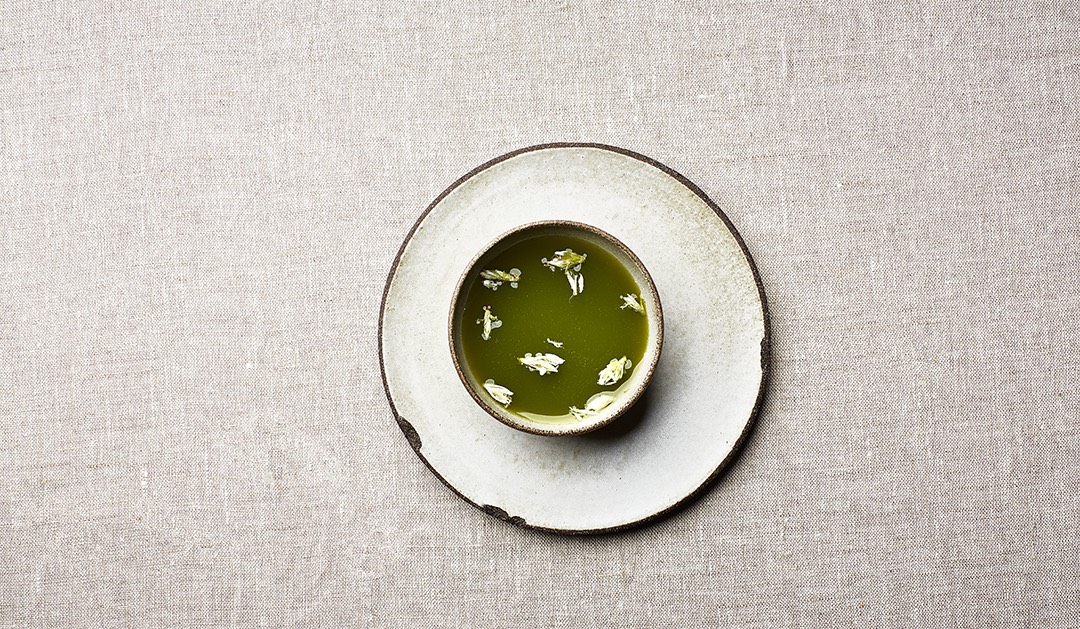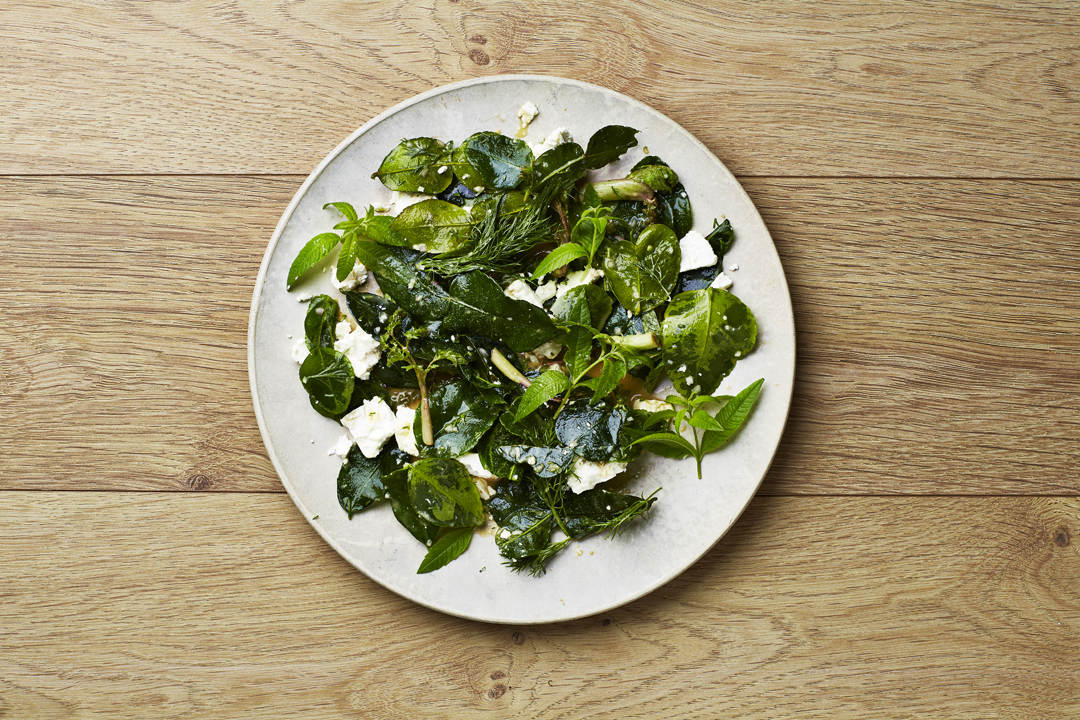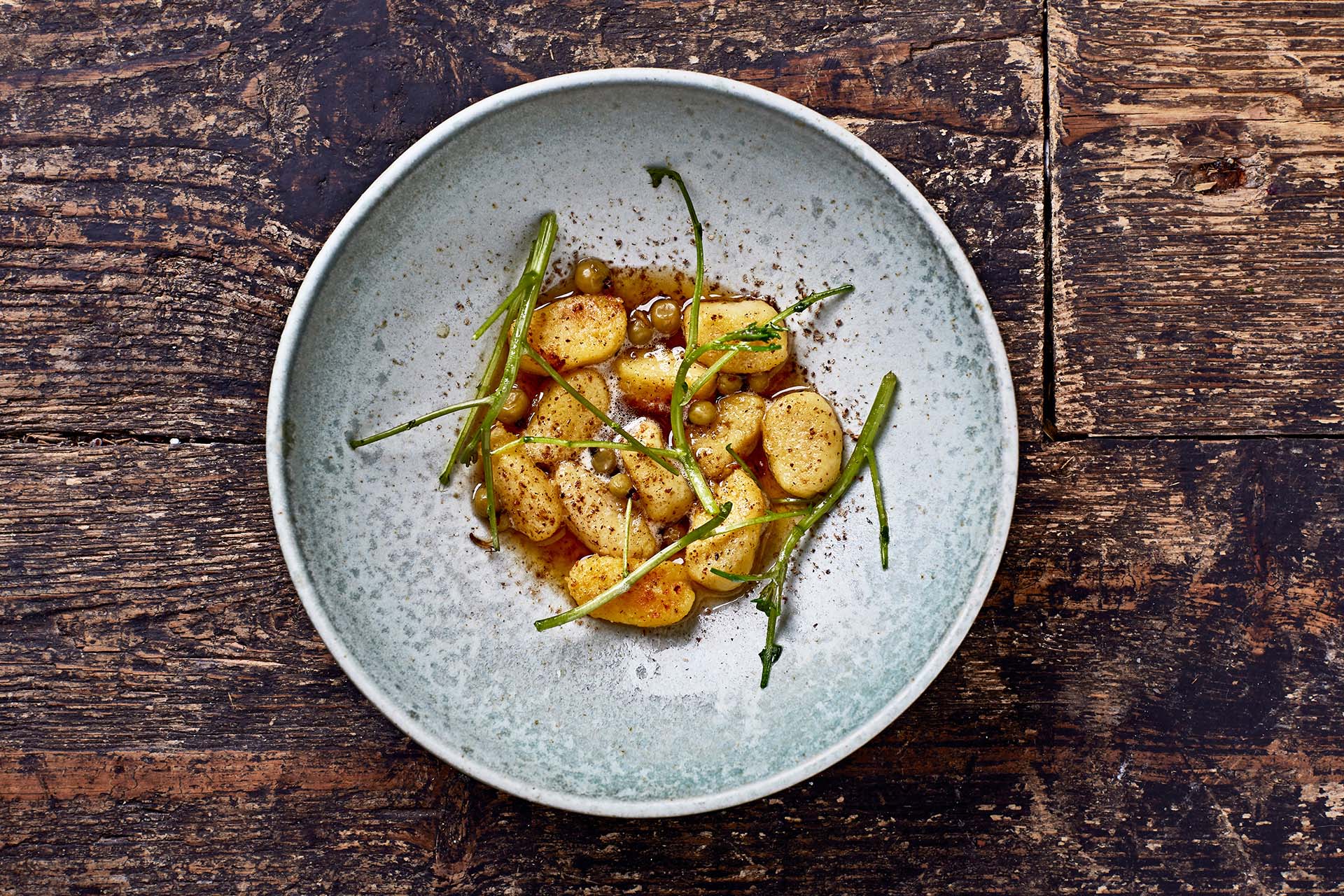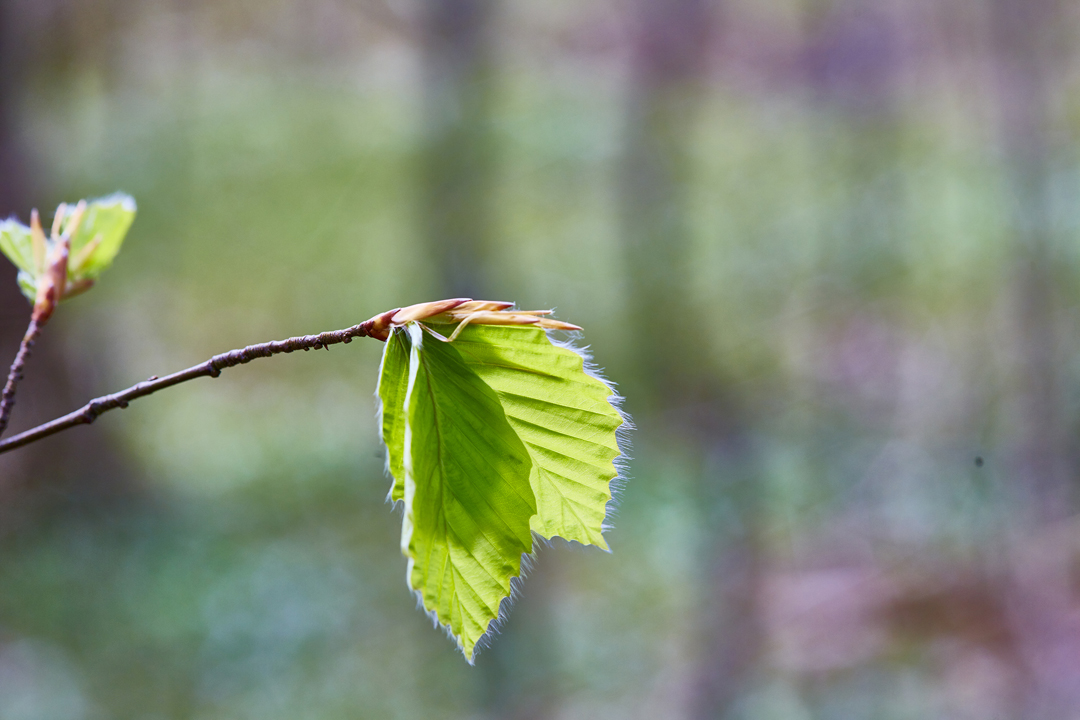
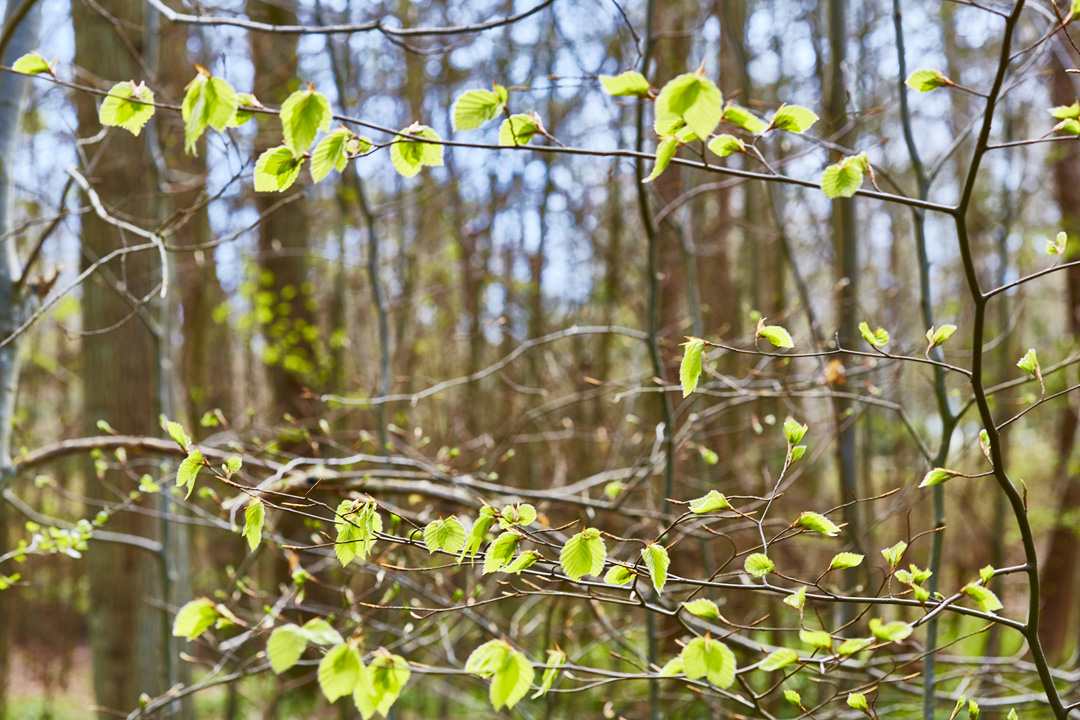
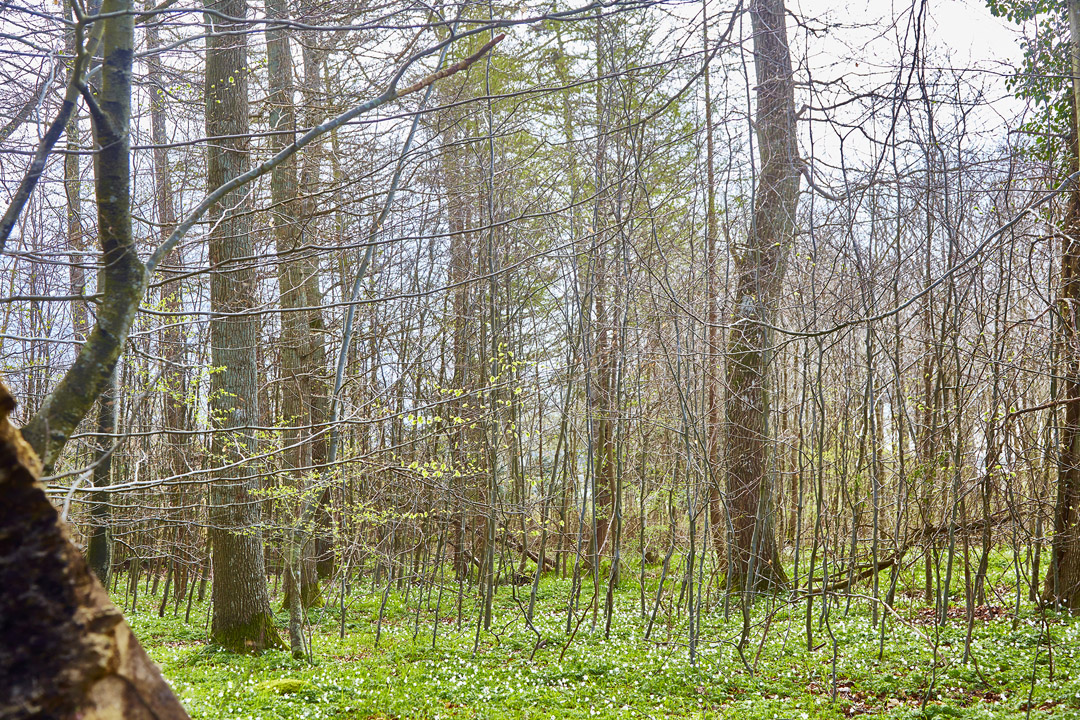
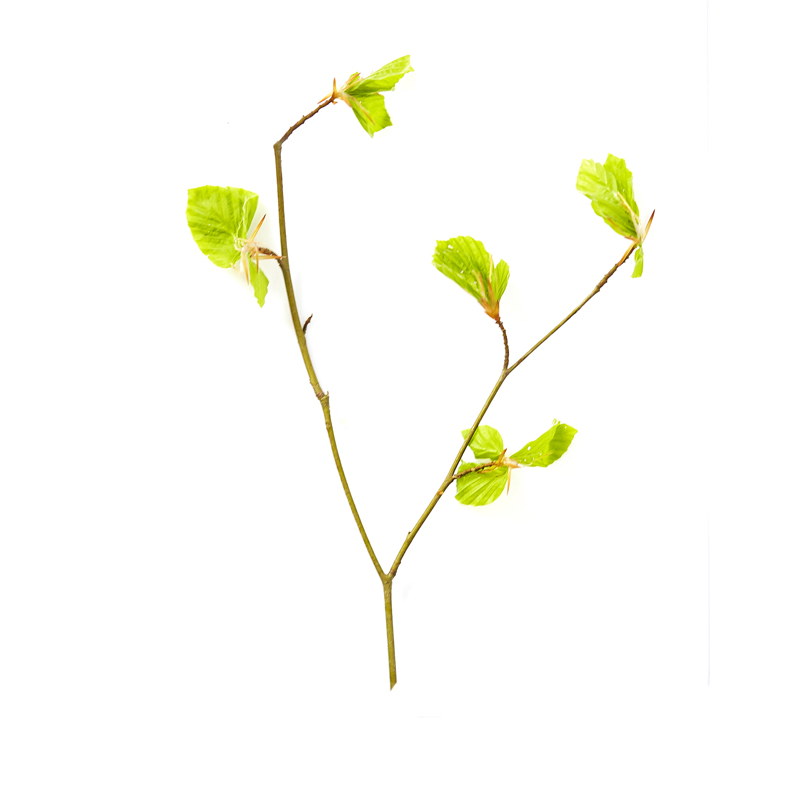
Beech
Beech trees unfurl their leaves in a matter of hours, and if you're lucky enough to be near a beech tree at just the right time, you can even hear it happen. The arrival of the young beech leaves is a fresh, edible reminder that spring has sprung and life starts anew.
-
Where to Find It
Beeches can grow to be up to 40 meters tall and are Denmark's most common hardwood tree, so if you find yourself in a hardwood forest, there's a good chance that it's a beech forest—or that there's one right nearby. Beech trees generally grow close to one another, and their tall, bare trunks make for a shady forest floor with very little ground cover. You can also find beech trees standing alone or in small groups. Beech trees are grown as hedging too, especially around public parks and in residential areas.
Deciduous forests, towns.
-
When to Find It
Fresh, newly sprouted beech leaves can generally be picked in April or May, while the fruit of the beech tree, called a "beechnut," forms in fall. You can pick the unsprouted shoots as early as February.
Unsprouted shoots: February. -
How to Spot It
Beech trees have thin, grey, very smooth bark. In beech forests, the tall trunks grow without side branches and culminate in broad, arched crowns. If a tree stands alone and has enough space and light, its trunk will be shorter, thicker, and will often branch out close to the ground. The crowns on these trees will often be larger and denser. Newly sprouted beech shoots are light green, very soft, and covered in tiny hairs that protect it against cold. The beechnut is a small, triangular nut housed in a brown pod with prickers on its exterior.
-
How to Pick It
Carefully clip the fresh leaves, which should be soft and light green. Later they develop a waxy texture that's slightly bitter and not especially pleasant to chew. It's best to pick beechnuts directly from the tree, as they'll quickly host fungus and mold if left on the ground.
-
NB!
The Ministry of Environment and Food of Denmark recommend limited consumption. One should not eat more than a few nuts and leaves at a time.
Leaves: April, May.
Beechnuts: October.
Risk of misidentifying the plant


